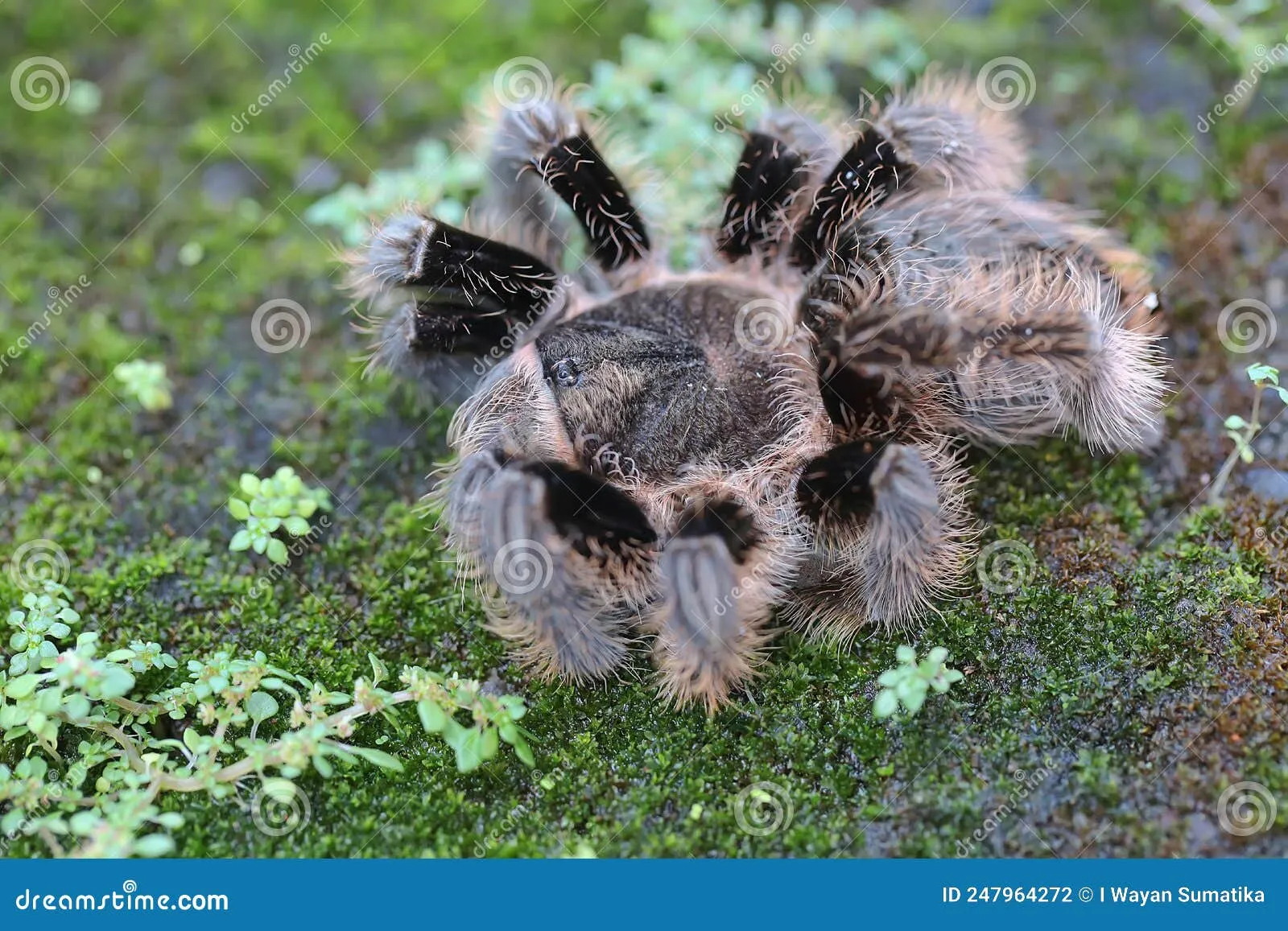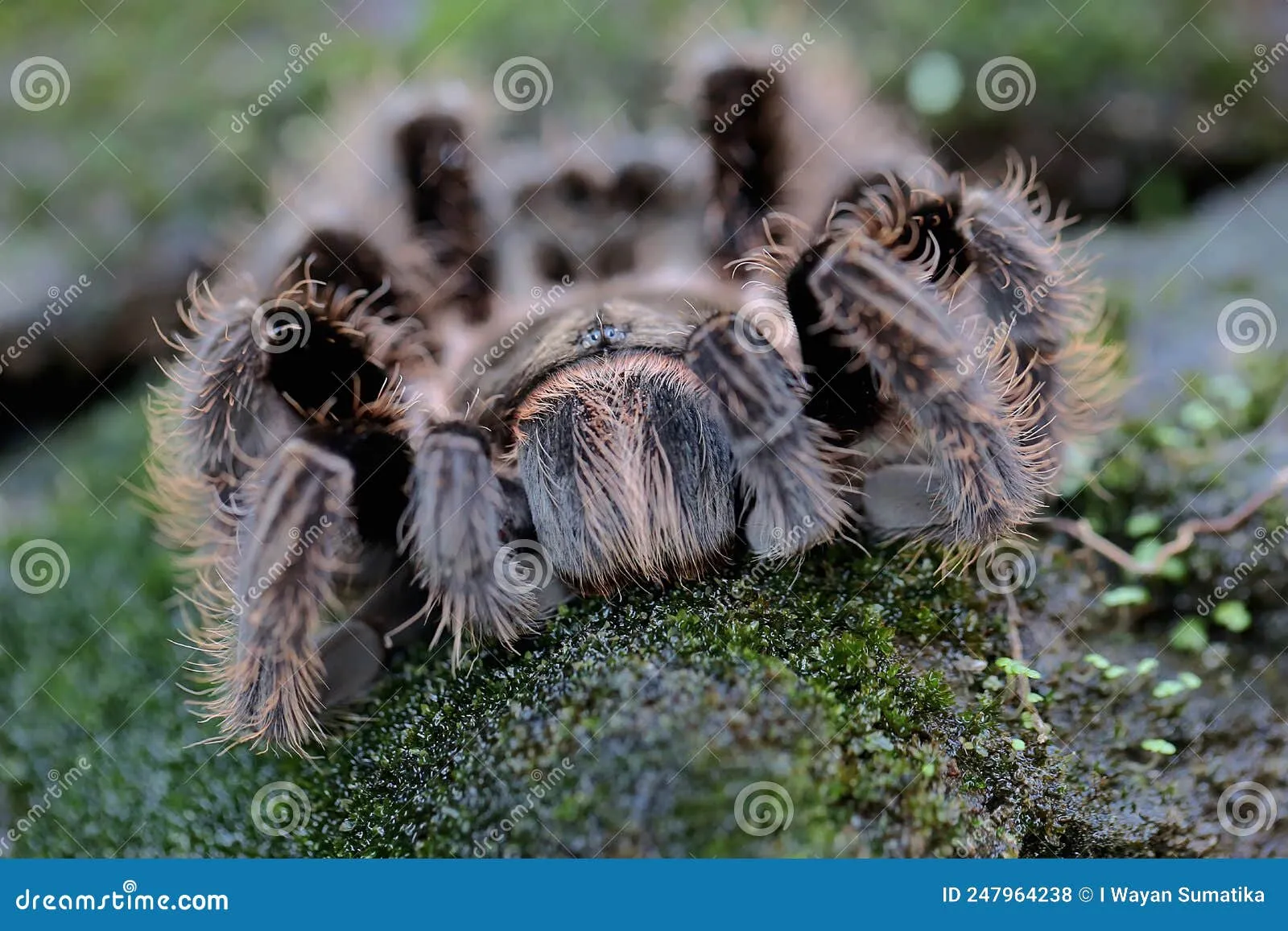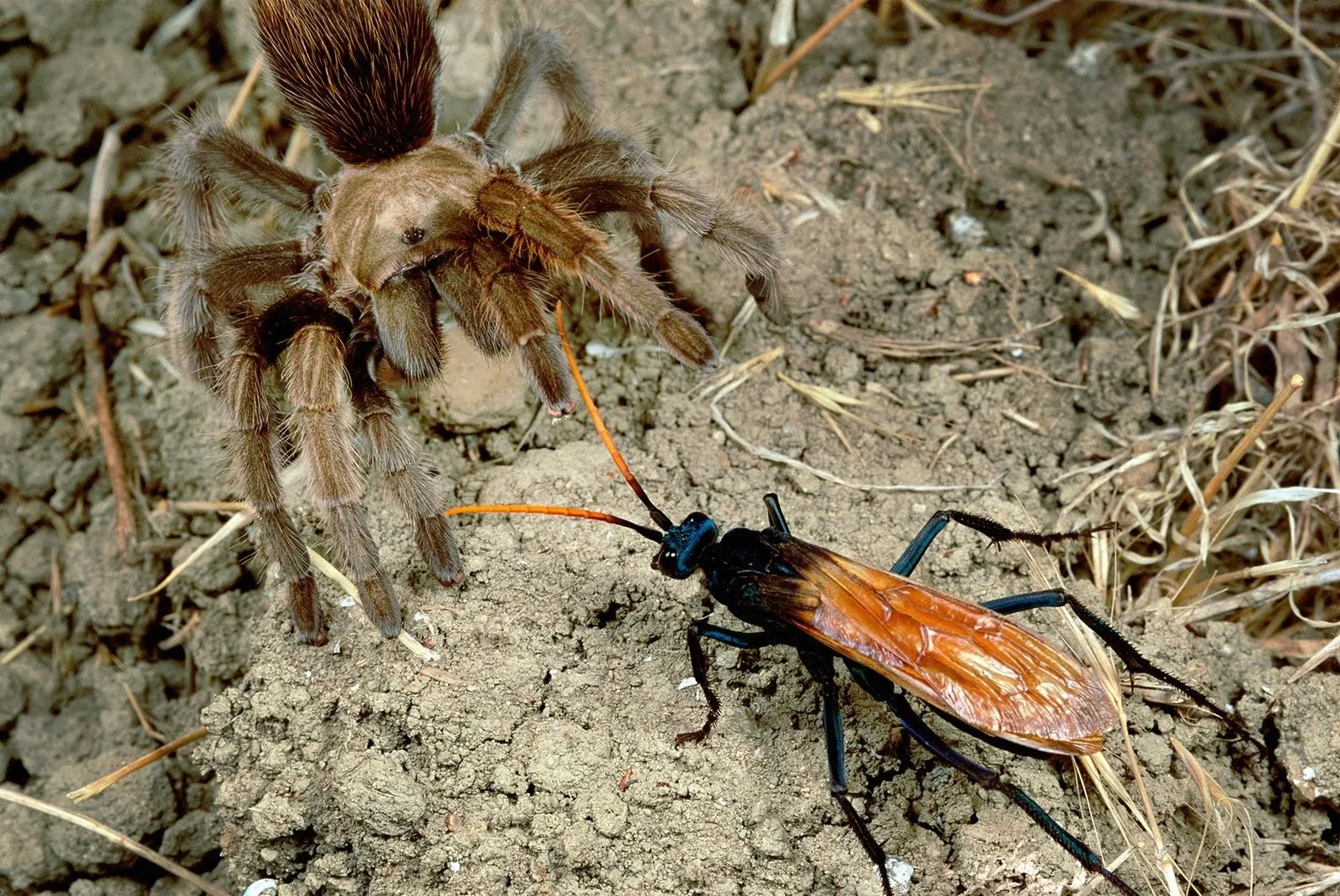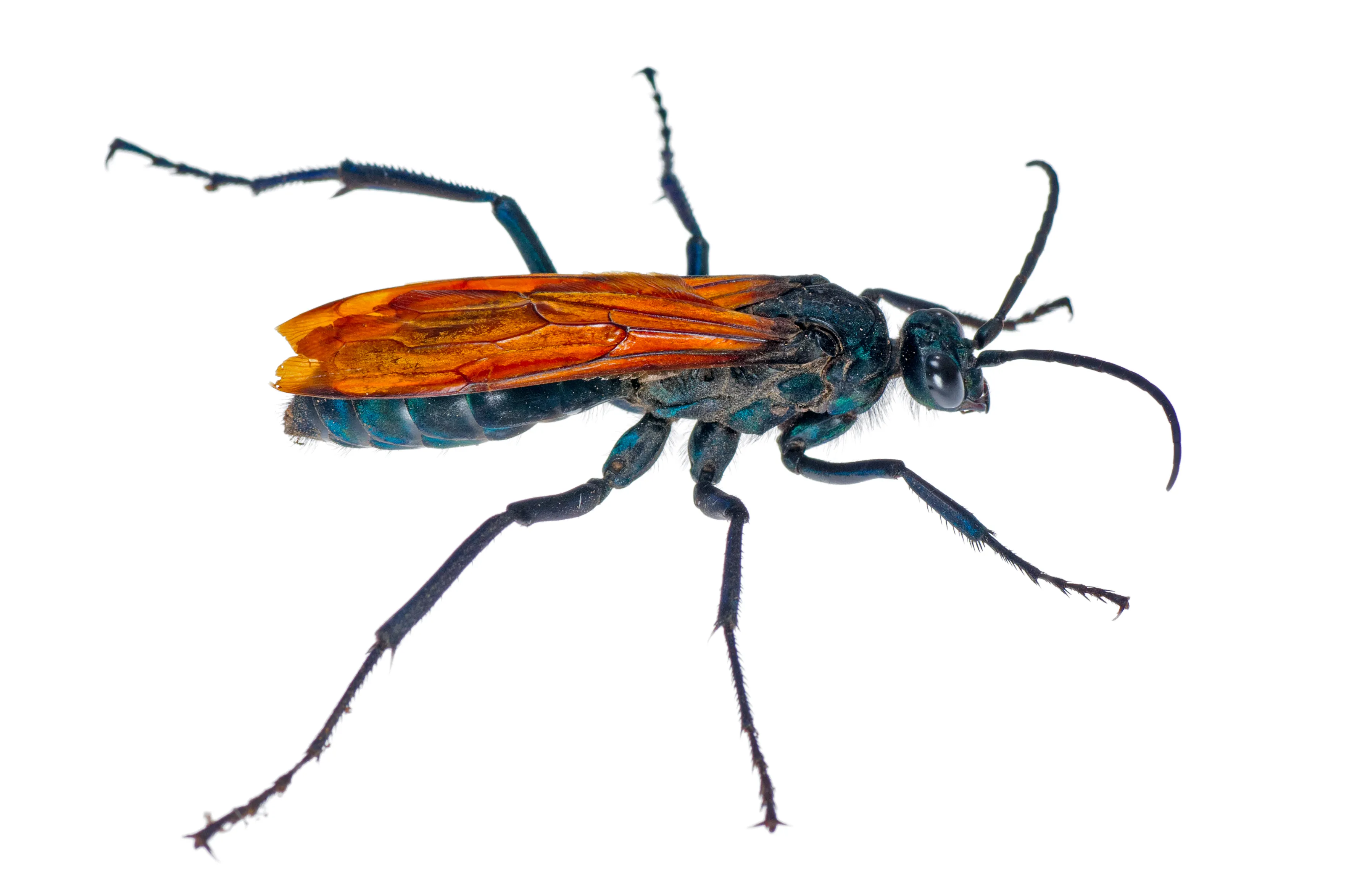What are Tarantula Hawks?
Tarantula Hawks are a fascinating group of large, powerful wasps belonging to the Pompilidae family. They are renowned for their unique hunting behavior, specifically targeting tarantula spiders as hosts for their larvae. These wasps are found in various regions, including the southwestern United States, South America, and Australia, and are a significant part of their ecosystems. Their striking appearance, characterized by iridescent blue-black bodies and vibrant orange or rust-colored wings, makes them easily recognizable and often feared. But beyond their intimidating appearance, there is a lot to learn about the tarantula hawk, its life cycle, and its role in the environment. Understanding these creatures can provide a deeper appreciation for the complex and often brutal beauty of the natural world, and the delicate balance that exists within it.
Tarantula Hawk Appearance
Tarantula Hawks are among the largest wasps, with females often reaching up to two inches in length, while males are slightly smaller. Their most distinctive feature is their striking coloration. The body is typically a deep blue or black, exhibiting a metallic sheen. This contrast is beautifully offset by their vibrant orange or reddish-brown wings. The size of these wasps is also notable; their robust bodies and powerful legs are essential for their hunting and nesting behaviors. The antennae are long and slender, and the overall appearance is one of a formidable predator. Their robust build is an adaptation to their lifestyle, allowing them to effectively subdue and transport tarantulas. The beauty of these insects, however, is often overshadowed by the fear they instill, but their physical attributes are perfectly suited to their role in nature.
Tarantula Hawk Behavior

The behavior of tarantula hawks is primarily centered around reproduction and hunting. The female wasps are the primary hunters, actively seeking out tarantulas. Once a spider is located, the wasp engages in a dramatic struggle, stinging the spider to paralyze it. She then drags the paralyzed tarantula to a burrow or nest, where she lays a single egg on its abdomen. The wasp then seals the burrow, and the larva hatches, feeding on the still-living spider. The larva grows, eventually pupating and emerging as an adult wasp. The male tarantula hawks, on the other hand, do not hunt. Their primary role is to mate with the females. They can often be seen hovering near potential nesting sites, waiting for the opportunity to mate. Their behaviors are focused on survival and the continuation of their species. The dramatic cycle of life, death, and renewal is a prime example of nature at work, often hidden from the casual observer.
Are Tarantula Hawks Aggressive?
While tarantula hawks have a fearsome reputation, they are generally not aggressive towards humans. Their primary focus is on hunting tarantulas. They will only sting humans if they feel threatened or are directly provoked. Their sting is infamously known as one of the most painful insect stings in the world, but it is typically reserved for their prey. The intensity of the sting is a defense mechanism, a deterrent to predators, rather than a tool for attacking humans. The behavior of a tarantula hawk is therefore largely determined by the situation. They are predators with a job to do, and they are not looking for a fight with anything that isn’t a tarantula. It’s worth noting that while the sting is incredibly painful, it is not usually life-threatening, although it can cause intense localized pain for several hours.
Tarantula Hawk Diet
The adult tarantula hawks primarily feed on nectar from flowers. This diet provides the energy they need to fly and search for mates. Their diet, therefore, plays an important role in pollination. This behavior ensures the adult wasps’ survival and fuels their reproductive activities. This seemingly simple food source underscores the ecological interconnectedness. The larvae, however, have a very different diet. They are exclusively carnivorous, feeding on the body of the paralyzed tarantula. This diet provides them with the nutrients necessary to grow and develop into adult wasps. Thus, the diet of the tarantula hawk varies drastically depending on their stage of life, which reflects the unique strategies that these insects have developed to ensure survival and reproduction.
What Do They Eat?

As mentioned earlier, the adult tarantula hawks are primarily nectarivores. They feed on the nectar of various flowers. They use their long tongues to reach deep into the flower blossoms. This nectar provides them with the energy required for flight and mating. Conversely, the larvae consume only tarantulas. They feed on the tarantula’s body from the outside, gradually consuming the paralyzed spider. This provides the necessary protein and other nutrients for the larva’s growth. This diet supports their development until they reach the pupal stage. It is a brutal but highly effective strategy, illustrating the predator-prey relationship. The specific diet of the tarantula hawk highlights its role as a specialized predator in its ecosystem.
Where Do Tarantula Hawks Live?
Tarantula hawks are found in a variety of habitats, typically where tarantulas are present. These wasps are commonly found in the southwestern United States. They are also present in parts of South America and Australia. Their habitat ranges from deserts to scrublands, and grasslands, as long as they have suitable areas for nesting and tarantulas to prey on. These wasps prefer areas with sandy or loamy soil, where they can dig their nests. The availability of nectar-producing plants is also important, as this serves as a food source for the adult wasps. The geographical distribution of the tarantula hawk is a great indicator of the broader ecosystem that supports it, showcasing the interdependencies between different species and their environments.
Tarantula Hawks and Humans
Interactions between tarantula hawks and humans are relatively rare. As mentioned earlier, these wasps are not inherently aggressive. They will generally avoid humans. However, they can sting if they feel threatened. If you encounter a tarantula hawk, the best course of action is to maintain a safe distance and not disturb it. If you are stung, the pain is severe. The sting is not usually life-threatening, but it is important to be prepared for a period of intense pain. If you are allergic, seek immediate medical attention. Understanding their behavior and taking appropriate precautions are essential to minimize negative interactions. Remember that the wasp is just doing what comes naturally, and respecting its space can avoid any issues.
Tarantula Hawk Sting

The sting of a tarantula hawk is legendary for its excruciating pain. The pain is often described as one of the most painful insect stings known. It is often described as intense, immediate, and prolonged. It’s the reason why they are so feared. The pain can last for several minutes, or even hours, depending on the individual. The sting is delivered through a stinger, located at the end of the abdomen. The venom contains compounds that affect the nervous system. While the pain is significant, the sting is generally not life-threatening to humans, except in cases of allergic reactions. The primary purpose of the sting is to paralyze tarantulas, and as such, the venom is not designed to kill humans. However, the experience is incredibly unpleasant and should be avoided at all costs. It’s a testament to the power of nature’s defense mechanisms.
Tarantula Hawk Sting Treatment
If you are stung by a tarantula hawk, there are several steps you can take to mitigate the pain and discomfort. The primary goal is to manage the pain. You can try applying ice packs to the sting site to reduce swelling and numb the area. Over-the-counter pain relievers, such as ibuprofen or acetaminophen, can help to alleviate the pain. It’s also important to remain calm and avoid any sudden movements, as this can exacerbate the pain. You can also try elevating the affected limb. In most cases, the pain will subside within a few hours. If you experience any severe symptoms, such as difficulty breathing, swelling of the face or throat, or dizziness, seek immediate medical attention. Such symptoms could indicate a severe allergic reaction. Generally, the pain is intense, but the treatment is straightforward.
Tarantula Hawks in the Ecosystem
Tarantula Hawks play a vital role in their ecosystems. They act as a natural control for tarantula populations. The larvae rely on tarantulas as a food source. This helps regulate the spider populations. They are also pollinators, as the adult wasps feed on nectar. This helps in the pollination of various plants. The tarantula hawk is part of a complex web of interactions. It’s a good example of how different species contribute to the balance of nature. Their presence indicates a healthy ecosystem, where predator-prey relationships are working. These wasps are an important part of the food web, and they are a testament to nature’s efficiency and the delicate balance within the environment.
